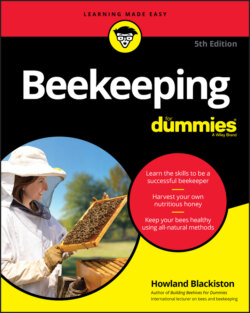Читать книгу Beekeeping For Dummies - Howland Blackiston - Страница 68
Pupa
ОглавлениеThe larva is now officially a pupa (the plural is pupae). Here’s where things really begin to happen but are not visible to the beekeeper The changes are hidden from sight under the wax cappings. But if you could, you’d see that this little creature is quickly beginning to take on the familiar features of an adult bee (see Figure 2-13). The eyes, legs, and wings take shape. Coloration begins with the eyes: first pink, then purple, and then black. Finally, the fine hairs that cover the bee’s body develop. After 12 days (in the case of the worker) the adult bee is now ready to chew her way through the wax capping to join her sisters and brothers. Figure 2-14 shows the entire life cycle, from start to finish, of the drone, worker and queen honey bees.
Courtesy of Dr. Edward Ross, California Academy of Sciences
FIGURE 2-13: Opened cells reveal an egg and developing pupae.
Courtesy of Howland Blackiston
FIGURE 2-14: This chart shows the daily development cycle of the two female castes and the drone, from egg to adult.
